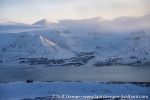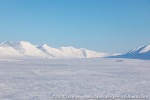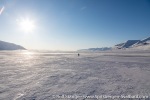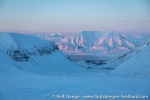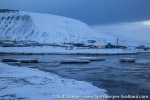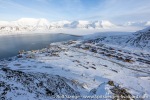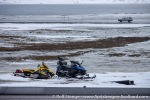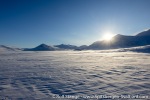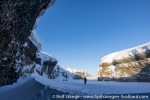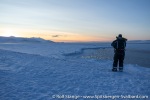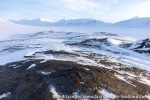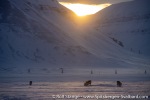-
current
recommendations- Liefdefjord
New page dedicated to one of Spitsbergen's most beautiful fjords. Background information and many photos.
- New Spitsbergen guidebook
The new edition of my Spitsbergen guidebook is out and available now!
- Liefdefjord
New page dedicated to one of Spitsbergen's most beautiful fjords. Background information and many photos.
Page Structure
-
Spitsbergen-News
- Select Month
- April 2025
- March 2025
- February 2025
- January 2025
- December 2024
- November 2024
- October 2024
- September 2024
- August 2024
- July 2024
- June 2024
- May 2024
- April 2024
- March 2024
- February 2024
- January 2024
- December 2023
- November 2023
- October 2023
- September 2023
- August 2023
- July 2023
- June 2023
- May 2023
- April 2023
- March 2023
- February 2023
- January 2023
- December 2022
- November 2022
- October 2022
- September 2022
- August 2022
- July 2022
- June 2022
- May 2022
- April 2022
- March 2022
- February 2022
- January 2022
- December 2021
- November 2021
- October 2021
- September 2021
- August 2021
- July 2021
- June 2021
- May 2021
- April 2021
- March 2021
- February 2021
- January 2021
- December 2020
- November 2020
- October 2020
- September 2020
- August 2020
- July 2020
- June 2020
- May 2020
- April 2020
- March 2020
- February 2020
- January 2020
- December 2019
- November 2019
- October 2019
- September 2019
- August 2019
- July 2019
- June 2019
- May 2019
- April 2019
- March 2019
- February 2019
- January 2019
- December 2018
- November 2018
- October 2018
- September 2018
- August 2018
- July 2018
- June 2018
- May 2018
- April 2018
- March 2018
- February 2018
- January 2018
- December 2017
- November 2017
- October 2017
- September 2017
- August 2017
- July 2017
- June 2017
- May 2017
- April 2017
- March 2017
- February 2017
- January 2017
- December 2016
- November 2016
- October 2016
- September 2016
- August 2016
- July 2016
- June 2016
- May 2016
- April 2016
- March 2016
- February 2016
- January 2016
- December 2015
- November 2015
- October 2015
- September 2015
- August 2015
- July 2015
- June 2015
- May 2015
- April 2015
- March 2015
- February 2015
- January 2015
- December 2014
- November 2014
- October 2014
- September 2014
- August 2014
- July 2014
- June 2014
- May 2014
- April 2014
- March 2014
- February 2014
- January 2014
- December 2013
- November 2013
- October 2013
- September 2013
- August 2013
- July 2013
- June 2013
- May 2013
- April 2013
- March 2013
- February 2013
- January 2013
- December 2012
- November 2012
- October 2012
- September 2012
- August 2012
- July 2012
- June 2012
- May 2012
- April 2012
- March 2012
- February 2012
- January 2012
- December 2011
- November 2011
- October 2011
- September 2011
- August 2011
- May 2011
- April 2011
- March 2011
- February 2011
- January 2011
- December 2010
- November 2010
- September 2010
- August 2010
- July 2010
- June 2010
- May 2010
- April 2010
- March 2010
- February 2010
- November 2009
- October 2009
- August 2009
- July 2009
- June 2009
- May 2009
- April 2009
- March 2009
- February 2009
- January 2009
- December 2008
- November 2008
- October 2008
- August 2008
- July 2008
- June 2008
- May 2008
- April 2008
- March 2008
- February 2008
- April 2000
- Select Month
-
weather information
-
Newsletter

| Guidebook: Spitsbergen-Svalbard |
Home → March, 2022
Monthly Archives: March 2022 − News & Stories
Light winter in Spitsbergen
Thu
31 Mar
2022
… at its best. “Light winter”, does that actually translate? “Lichtwinter” is not a common word in German either, but a wonderful one. Not “winter light” in terms of a less pronounced cold season, but a winter combined with beautiful light. And that is exactly what you can get in Spitsbergen in late March. Unless the weather is as it was around mid March this year. Quite terrible at times. But then, winter came back with force, with temperatues well below -20 degrees centigrade 🙂 everybody who cares for outdoor life in the Arctic could have a splendid time.

Wind-carved snow surface in Nordenskiöld Land.
And so did we. Beautiful arctic winter impressions. March can produce wonderful light: during nighttime, it still gets more or less dark – although it is getting a bit thin on the ground with regards to northern lights – so long sunsets cast stunning light over the snowy landscape. After the spring equinox, this year on March 20, the darkness of the night begins to give way to the light of the midnight sun. An wonderful time for anyone who appreciates potentially fantastic light situations, just as the late summer.

The light of the low sun and sea fog over Adventfjord on a cold day,
with the airport in the background.
We made good use of these stunning days. Here are some impressions of the light winter in Spitsbergen in the second half of March between east coast, Adventfjord and Van Mijenfjord:
- gallery anchor link: #gallery_2199
Click on thumbnail to open an enlarged version of the specific photo.
Weather kaleidoscope
Sun
20 Mar
2022
The weather last week was mostly anything but pleasant, as I wrote already in the previous article on this site. On Friday, a polar low pressure moved across Spitsbergen and produced a rather astonishing series of weather changes within a short period of time: the rain stopped and instead we finally got a bit of snow again, and the temperatures dropped below freezing again. Not much, but better than nothing.

A first little excursion into Adventdalen after the recent warm weather spell.
That was finally something useful.
But it was a matter of a few hours until we got the next interesting weather event in shape of a snow storm well beyond the everyday combination of wind and snow in these latitudes. I don’t know what wind speed we had, but being outside was quite challenging and to some degree actually dangerous: seeing and breathing were difficult in this turbulent whirl of wind and snow, the storm could just blow you off your feet at times and items were blown around and could have hit you. The storm did actually cause some minor damage also to items that had been standing outside for years already.

Snow storm in Longyearbyen.
But this rather interesting weather experience did not last long, and already on Saturday we could to some degree enjoy what most would picture for themselves when they think about the arctic winter. But the snow conditions in and near Longyearbyen have indeed suffered a lot during the last week’s warm temperatures and rain.
Maybe we get some more snow now. Fingers crossed

Winter scenery at Elveneset in Sassenfjord on Saturday.
It has always been and remains an interesting phenomenon that thawing weather and snow melt always hit Longyearbyen and the near surroundings before they make themselves felt elsewhere. It is here that the snow melt always comes weeks before it does so in other places. You can almost rely on having fine winter conditions e.g. in Sassendalen when the snow has turned into slush and rivers have broken up in and around Longyearbyen. Once you have left Longyearbyen and lower Adventdalen behind you, it looks like nothing has happened.
Some impressions from these (weather-wise) rather turbulent days:
- gallery anchor link: #gallery_2196
Click on thumbnail to open an enlarged version of the specific photo.
… bad times: rain and melting snow in the winter
Well, “bad times” is clearly a very relative description of life in Longyearbyen. We are having a good life. No bombs are falling from the sky. Just rain. But, hey … rain! In March! And far too much, and a large proportion of the white beauty around is is just melted and flown away during the last couple of days.
A strong low pressure system further south in the north Atlantic has pumped a lot of warm air up north. This warm air incursion brings wind, rain and melting temperatures. Far more of all of these than we actually appreciate.
Our little world up here is melting.

Longyearbyen: rain and meltwater turn streets into little lakes.
This was at least our impression for several days, wherever you turned the eye. Water was falling down from the sky, water turned the snow grey, then dark and finally into water, creating lakes on flat tundra areas. Water broke through the snow in rivers that should remain frozen for several months still.
Rubber boots were the best choice for a little walk. It happens quickly that you make one wrong step and your foot disappears in a deep hole of slush, a very cold and unpleasant mixture of snow and meltwater. On the other hand, it can be slippery and smooth as glass just a step further. It is very popular in Norway to use spikes. A great invention, they have certainly saved many people from broken legs and what not.

Drainages had to be created in many places to prevent the rivers from flooding.
Normal routine in May and June, but very uncommon in March.
For anything further away, any tours out into the arctic winterwonderland of Spitsbergen in the late winter: it is pretty much the only reasonable option to wait until Spitsbergen actually is a winterwonderland again. It wasn’t for days on end, and it still isn’t at the time of writing. Winter will beyond any doubt return. It is not gone, it is just taking a break. It will be colder again, the rivers will freeze again, lakes will turn into ice.
The question is if we get enough snow again to tour reasonably out there in the wild, filling the many dark gaps where the tundra is now free of snow. Let’s hope so, in the interest of all who are coming up here with dreams of the arctic winter. There are many of them in March and April.

Snow mobile routes have turned into slushy snow swamps and lakes. If you drive here, you risk getting stuck and damaging the vegetation under the slush.
Until the snow melt comes in May and finishes this wintern for good.

It is, for good reason, not allowed to drive on natural ground unless it is frozen AND snow-covered. There are those who take a liberal approach to this rule at the end of the season or during warm weather spells, to put it mildly – although it is legally binding. The result looks like this and it will take many years without further disturbance to for the vegetation to recover (Adventdalen, next to the road. Picture taken in june 2019).
The question will inevitably come up: is this now weather or climate change? My short answer: it has aspects of both. Weather and climate are hard to separate when it comes to any given meteorological event. Both are just different perspectives, different time scales, for pretty much the same collection of phenomena which altogether describe the atmosphere, especially its lower layers (that’s where we usually are). Such as temperature, precipitation, wind, air pressure and humidity, to name some of the most important ones. Weather is what you can see, feel and measure here and now. If you collect the same data over many years and turn them into averages and other statistical values, then you take the climate perspective.
So, in this given case, it is hard to say if it would have happend without climate change. Science has made important advances in recent years regarding such questions, so it would be interesting to hear an expert’s opinion or even see the results of scientific modelling of this week’s warm air incursion in Spitsbergen.
All I can do here is try to come up with some more or less educated guessing. The tendencies that climate change create for this part of the Arctic appear to be pretty clear: more frequent weather changes, more strong wind, more precipitation, especially more rain in the winter.
There are those who will say now that winter rain was not completely unheard of 100 years ago, and yes, that is true. But both the frequency and the intensity of these events are increasing now, and current climate change makes an important contribution to this development, or rather: the decisive one.
So, chances are that we would not have had this week’s warm air incursion up here without climate change, or at least that it would have been much less intense. We have had days of rain and temperatures up to around 5 degrees centigrade – above freezing! In March! I still can’t really believe it.
Also locals who have seen many Spitsbergen winters watch the weather with astonisment and very little amusement these days. And those who came up exactly this week to enjoy the arctic winterwonderland – well, what can I say. My pity is with them.
- gallery anchor link: #gallery_2193
Click on thumbnail to open an enlarged version of the specific photo.
Good times …
Wed
16 Mar
2022
Spitsbergen during the light winter, as it should be. Snow, ice and cold. The infamous warm air incursions with temperatures above freezing, rain and melting snow had not yet occurred this winter, to the delight of man and beast alike.

Spitsbergen winter: pingos in Adventdalen
Also to our delight, and we made good use of the opportunity, enjoying the beauty of nature and life in general in Longyearbyens’s closer and slightly more distant surroundings, on well known and lesser well known routes.
You always keep learning in the Arctic. I found out that using a snow-covered pile of stones at the foot of a steep slope isn’t a good tool to stop a snow mobile after a rapid downhill descent. Leaving the snow mobile with the (helmet-covered) head first through the wind screen isn’t the world’s best idea either. Not that I couldn’t have thought of that before 😉 it wasn’t on one of the usual routes.
But minor adventures like that just happen when you are out in the arctic wildnerness, and as long as nothing really happens, beyond what can be fixed with a quick and easy repair, all is good. We enjoyed those days. Here some impressions of these tours between Longyearbyen, Nordmannsfonna and Tempelfjord:
- gallery anchor link: #gallery_2189
Click on thumbnail to open an enlarged version of the specific photo.
Local tourism organisation asks members not to spend money in Russian settlements
Against the background of Putin’s aggressive war in the Ukraine, the local tourism inter-trade organisation Svalbard Reiselivsråd encouraged the member companies not to spend money in the Russian settlements in Spitsbergen, Barentsburg and Pyramiden.

Popular in the past, now controversial: the brewerey in Barentsburg.
It was just a few days ago that Svalbard Reiselivsråd initially made a different decision, arguing that boycotts and sanctions should be measures between governments and states, but not on a local level. The recent turnaround came because many pointed out that the income generated in the Russian settlements benefits the owner of the settlements including all touristic offers and services: the Russian state-owned Trust Arktikugol, or in other words: the Russian government, which now leads a brutal and illegal war in the Ukraine.
Svalbard Reiselivsråd does not advise against tours to Barentsburg and Pyramiden, just from spending money there. Tours especially to Barentsburg used to be very popular before the recent large-scale Russian invasion started. These excursions usually included a local meal and an opportunity to buy souvenirs, including locally made ones. Many tour operators will now stop this practice.
But not all: also the new decision is controversial. There are those tour operators who argue that such boycotts will hit the wrong people, namely the local population – which includes many Ukrainians – rather than the regime in Moscow.
Svalbard Reiselivsråd makes only recommendations to the member companies, but these recommendations are not binding. Every tour operator will decide individually if they will continue tours to the Russian settlements and if they continue to buy and pay for local services.
Sun festival in Longyearbyen
The sun festival (solfest) is an important highlight in the annual calendar for many in Longyearbyen. It is traditionally celebrated on 08 March, when the first direct rays reach Skjæringa, the oldest part of Longyearbyen. On this day, a large crowd comes together at the stairs of the old hospital (which does not exist anymore) close to the church.

Sun festival (Solfest) in Longyearbyen.
This was also what happened in good tradition this time, although clouds on the southern horizon threatened to spoil the event. Many locals and certainly also a number of tourists gathered to celebrate the return of the light. The traditional programme includes singing, and when the sun was fighting to get through around 12.45 hours, she was lively cheered to until she indeed finally came out, to everybodies great delight!

Sun festival in Longyearbyen: “Here comes the sun” 🙂
Talk of luck – soon, the horizon disappeared again behind a grey curtain of clouds.
The sun festival is actually nmore than “just” the 08th of March, it is a whole week with a series of various cultural events. Some of them, such as the traditional revye that always comes with the solfest, have to be postponed by several weeks because too many of the artists are currently fighting Covid-19 🙁
From Farmhamna to Longyearbyen
Tue
8 Mar
2022
I have returned to Longyearbyen after five weeks in Farmhamna. Back to civilisation – well, in a wider sense. Longyearbyen, anyway. And in time for the sun festival, the second one this year for me. We had one in Farmhamna already on 16 February 🙂
The time I spent in Farmhamna was plainly wonderful. Rich and full in experiences and impressions. Stunning and interesting. A lot of food for an arctic-hungry soul and for a similarly minded camera.
But this chapter is over now for me. I have been a little lazy in Farmhamna concerning writing here, I spent most of the time there in the “here and now”. I have to get back to that. But not now.
Farmhamna is not the end of the world, but not far from it either. Getting there and away is not just done easily and quickly, as these pictures may illustrate:

Surf can always make life difficult on the west coast (and elsewhere) …
So far, this year seems to bring a lot of ice to the “cold coast” (Svalbard), at least in relation to recent standards. There is quite a bit of ice even on the west coast right now, as the ice chart shows. Too often, there has been hardly any ice at this time of year in recent years.

… and ice isn’t an unknown phenomenon in Spitsbergen either.
Also in the Farmhamna area, there has been quite a lot of ice in recent weeks. At times, the little peninsula was completely blocked from all directions, and other bays in the area were also filled with ice. Not necessarily thick and solid, but enough to keep a boat from getting there.

This is what the bay Farmhamna has been like the last couple of weeks.
The combination of surf on one side of the peninsula and ice on the other side added some extra excitement (and sweat) to the exchange operation, where I left Farmhamna and Rico got his family back. Finally it worked. The two Henningsens of Hennningsen Transport and Guiding in Longyearbyen made it possible with their little but strong ship Farm (there is indeed a relationship between the place and the boat, as the name suggests) and some good Zodiac driving to shuttle people and cargo in and out in challenging conditions.

Zodiac operation in icy waters.
On board, there was a small group of people, including Kristina, who were there for the rare opportunity of a visit to Farmhamna. This did unfortunately not work out, given the conditions. Instead, they got a fair bit of rock’n’roll on the boat at times. In the end, we were happy that we could make the key part of the operation work. Don’t ever take anything for granted on and around these islands!

Farm in position in Farmhamna.
Local tourism inter-trade organisation against boycott of Russian settlements
While the Russian war is raging in the Ukraine, many are asking in Longyearbyen how to deal with the Russian neighbours in Barentsburg, where part of the population is Ukrainian, and the largely abandoned settlement of Pyramiden.
The important winter tourism season has started, and the many tourism companies in Longyearbyen were looking forward to the season after two very difficult corona years. Day trips to Barentsburg have, so far, been amongst the most popular offers; Pyramiden is also an important destination, although less frequently visited than Barentsburg because if it further away.
Now many in the industry are wondering how to deal with these offers considering the Russian aggression, war and crimes in the Ukraine and the international reactions. The local tourism inter-trade organisation Svalbard Reiselivsråd has taken the question upn and discussed it between their members and with authorities.

Barentsburg: usually a popular destination, now controversial.
As a result, Svalbard Reiselivsråd does not recommend to boykott the Russian settlements. The organisation argues that sanctions should be measures on a governmental level but not on a local, private sector level, where a boykott is more likely to hit people locally rather than the Russian government and others who are responsible for the current war and crime in the Ukraine. Svalbard Reiselivsråd indicates that they understood from Oslo authorities that a normal relationship is desired on a local level, according to Svalbardposten.
Some members had argued for a boykott of the Russian settlements, and clients had cancelled their bookings. According to Svalbard Reiselivsråd, it is up to every company not to offer trips to Barentsburg or Pyramiden, and it is anyway up to every tourist to book a tour to these settlements or not.
News-Listing live generated at 2025/April/30 at 17:31:27 Uhr (GMT+1)





